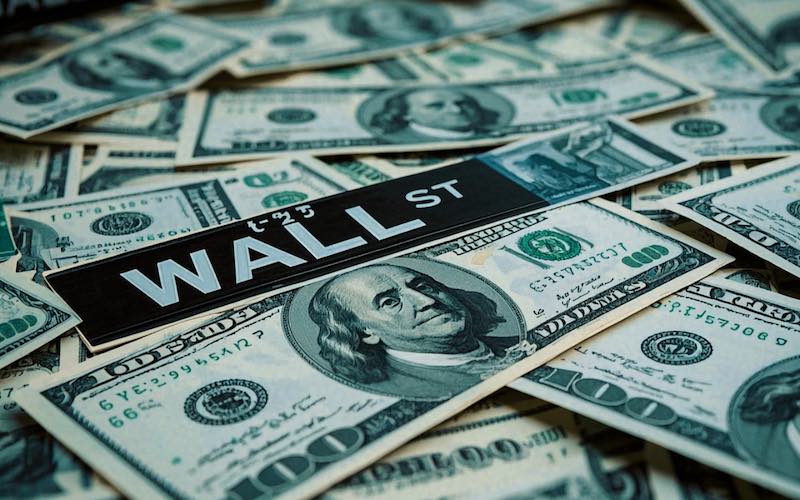The US dollar's defenses collapsed! The non-farm payroll report triggered a 1.06% plunge, with the euro, yen, and Canadian dollar under siege from three directions.
2025-08-02 17:18:13
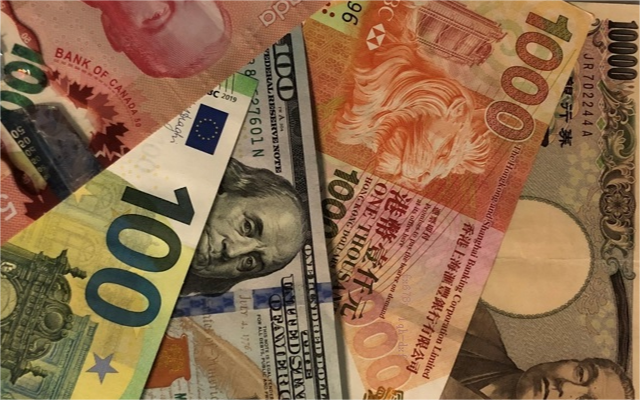
US dollar (USD)
This Week's Trends : The US Dollar Index (USD) briefly strengthened at the start of the week as the US second-quarter GDP grew by a better-than-expected 3%. However, on Wednesday, the Federal Reserve held interest rates steady, and Powell's cautious tone regarding a September rate cut dampened expectations, causing the dollar to remain volatile at a high level. On Friday, July's non-farm payroll data unexpectedly disappointed, with only 73,000 new jobs added, far below market expectations of 110,000. June's data was also significantly revised downward to 14,000. The dollar index subsequently fell 1.06% to 98.97, its largest single-day drop in nearly four months.
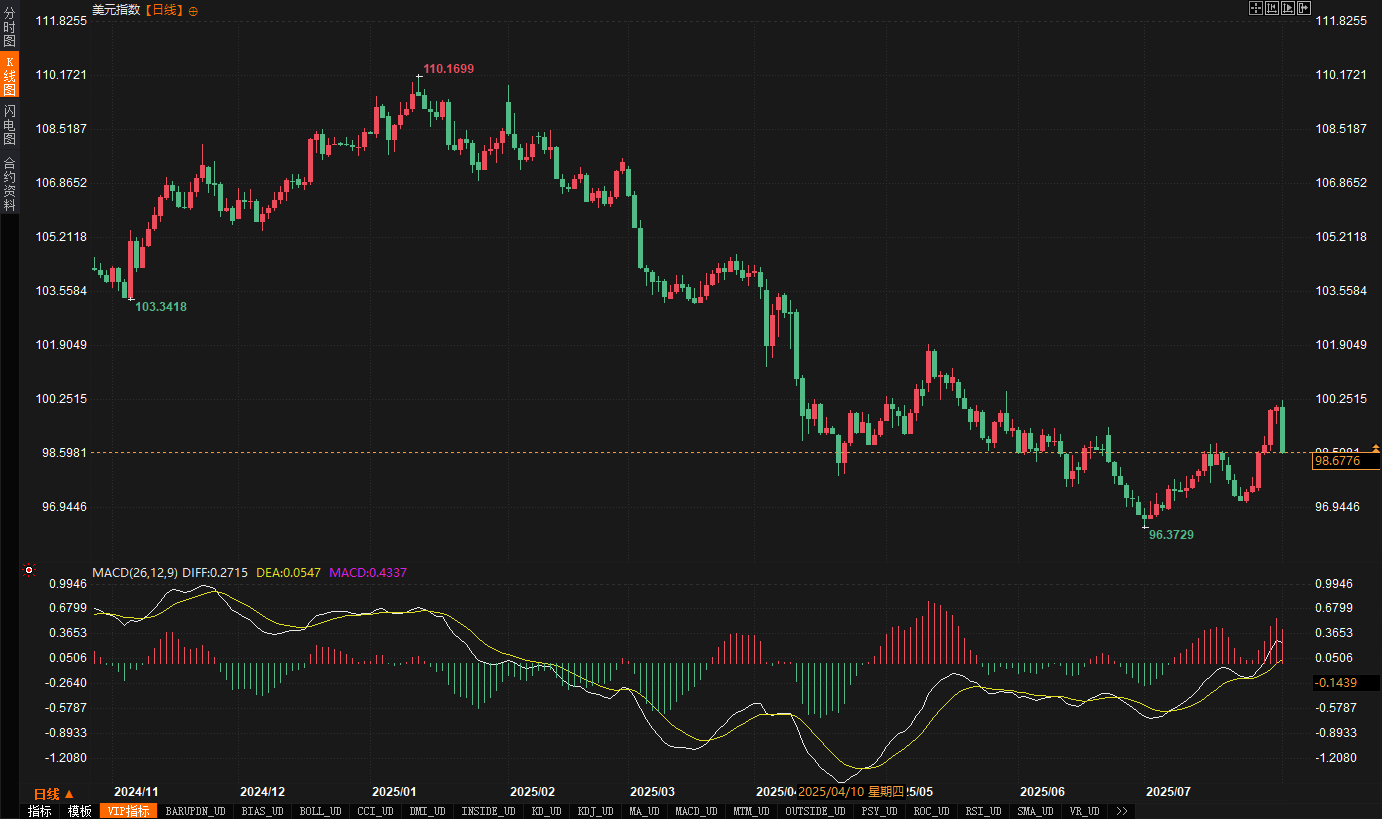
Economic Data and Events <br/>U.S. GDP grew by 3% in the second quarter, exceeding market expectations and demonstrating economic resilience, but the market was highly sensitive to trade fluctuations in the data and the impact was limited.
June PCE Price Index: The core and overall PCE inflation rates unexpectedly accelerated, indicating that inflationary pressures persisted, limiting the Fed's room for easing.
July non-farm payroll data: 73,000 new jobs were added, far below expectations. June data was revised down to 14,000, and the unemployment rate rose to 4.2%, in line with expectations. The market's pricing for a September interest rate cut rose from 34 basis points to 58 basis points.
The Federal Reserve's interest rate decision: keeping interest rates unchanged, Powell emphasized that the labor market is "robust" and expressed reservations about cutting interest rates in September, but the non-farm payroll data made the market bet on interest rate cuts again.
Trump's tariff policy: Trump imposed tariffs on Canada (35%), Switzerland (39%) and other countries, pushing up the US dollar in the short term, but long-term uncertainty exacerbated market risk aversion.
Analyst and Institutional Views
Helen Given, head of trading at a Washington-based trading firm, believes the non-farm payroll data, which fell far short of expectations and included a downward revision to the previous month's figures, indicates a significant cooling in the labor market. September's employment data will be crucial for determining whether the Federal Reserve will cut interest rates. The US dollar may come under pressure in the short term due to rising expectations of a rate cut.
Jonas Goltermann, Deputy Chief Market Economist at Capital Economics, said the dollar's assumption of a stronger second half of the year relies on the resilience of the US economy and the Federal Reserve maintaining high interest rates. If recession risks increase, the dollar could weaken against lower-yielding currencies such as the yen and euro, but could rebound against riskier currencies.
Analysts from an institution pointed out that Trump's tariff policy may push up inflation by slowing economic activity, forcing the Federal Reserve to maintain high interest rates. The short-term fluctuations of the US dollar will be subject to trade tensions and the statements of Federal Reserve officials.
Next Week's Focus: The US dollar's performance will be primarily driven by fundamentals. With less US economic data available next week, market focus will be on the July ISM non-manufacturing PMI and June factory orders. If the PMIs indicate a slowdown in economic activity, expectations of a rate cut could further intensify, potentially putting pressure on the dollar. The subsequent development of Trump's tariff policy will also be crucial. If trade tensions escalate, risk aversion could boost the dollar; if tensions ease, the dollar could find support. Hawkish or dovish statements from Federal Reserve officials will also influence market expectations of the path of rate cuts.
Japanese Yen (JPY)
This week's trends <br/>The USD/JPY (JPY=) exchange rate saw significant volatility this week. Early in the week, the exchange rate rose to 150.91, its highest level since March 28th, on the back of signals from the Bank of Japan that it was in no hurry to raise interest rates and positive US economic data. Following the release of Friday's non-farm payroll data, the dollar plummeted, and the yen rebounded, with USD/JPY falling 2.01% to 147.7. Japanese Finance Minister Katsunobu Kato expressed concern about exchange rate fluctuations, sparking market speculation about possible intervention.

Economic Data and Events <br/>Bank of Japan's interest rate decision: The Bank of Japan held interest rates unchanged on Thursday, with a unanimous vote. The central bank's outlook report predicts that inflation will slow in the short term but gradually accelerate in the long term. Risks to economic activity are tilted to the downside, and trade policy may change the trend of globalization.
Industrial output in June: Growth unexpectedly accelerated, showing resilience in industrial activity.
Retail sales in June: The growth rate slowed down less than expected, and the demand side performed steadily.
Geopolitics and market sentiment: An earthquake triggered by the Russia-Ukraine conflict briefly boosted safe-haven demand for the yen. The US-Japan trade agreement reduced some uncertainty, but Trump's tariff policy exacerbated global trade concerns.
Analyst and institutional views <br/>An institutional analyst said that the Bank of Japan's cautious attitude towards interest rate hikes has caused the market to postpone its expectations for a December rate hike, but if the central bank's summary of opinions next week suggests the possibility of a rate hike, it may support the yen in the short term.
A market analyst noted that the yen's status as a safe-haven asset was validated by events related to the Russia-Ukraine conflict this week. If risk aversion eases next week, the yen could come under pressure; however, if geopolitical risks escalate, the yen will find support.
Japanese Finance Minister Katsunobu Kato expressed concern about recent exchange rate fluctuations, suggesting that authorities may intervene in the market, but the possibility of intervention is currently low.
Next Week's Highlights <br/>The yen's performance will be primarily driven by risk aversion and expectations of central bank policy. The market will closely monitor the Bank of Japan's July meeting summary; if it hints at a possible rate hike, the yen could find support. June's national household spending and current account balance data will also provide clues about economic activity. A widening current account surplus, indicating increased capital inflows, could boost the yen. Furthermore, global market reactions to Trump's tariff policies and the Russia-Ukraine conflict will impact safe-haven demand for the yen. If risk aversion subsides, the yen could weaken.
British Pound (GBP)
This week's trend <br/>The British pound (GBP=) performed relatively steadily against the US dollar this week, lacking any major economic data to drive its performance. Its performance was primarily driven by fluctuations in the US dollar. Following the release of the non-farm payroll data, the British pound saw a slight rise, aided by a weaker US dollar, but overall remained range-bound, continuing its downward trend against the US dollar for the month.
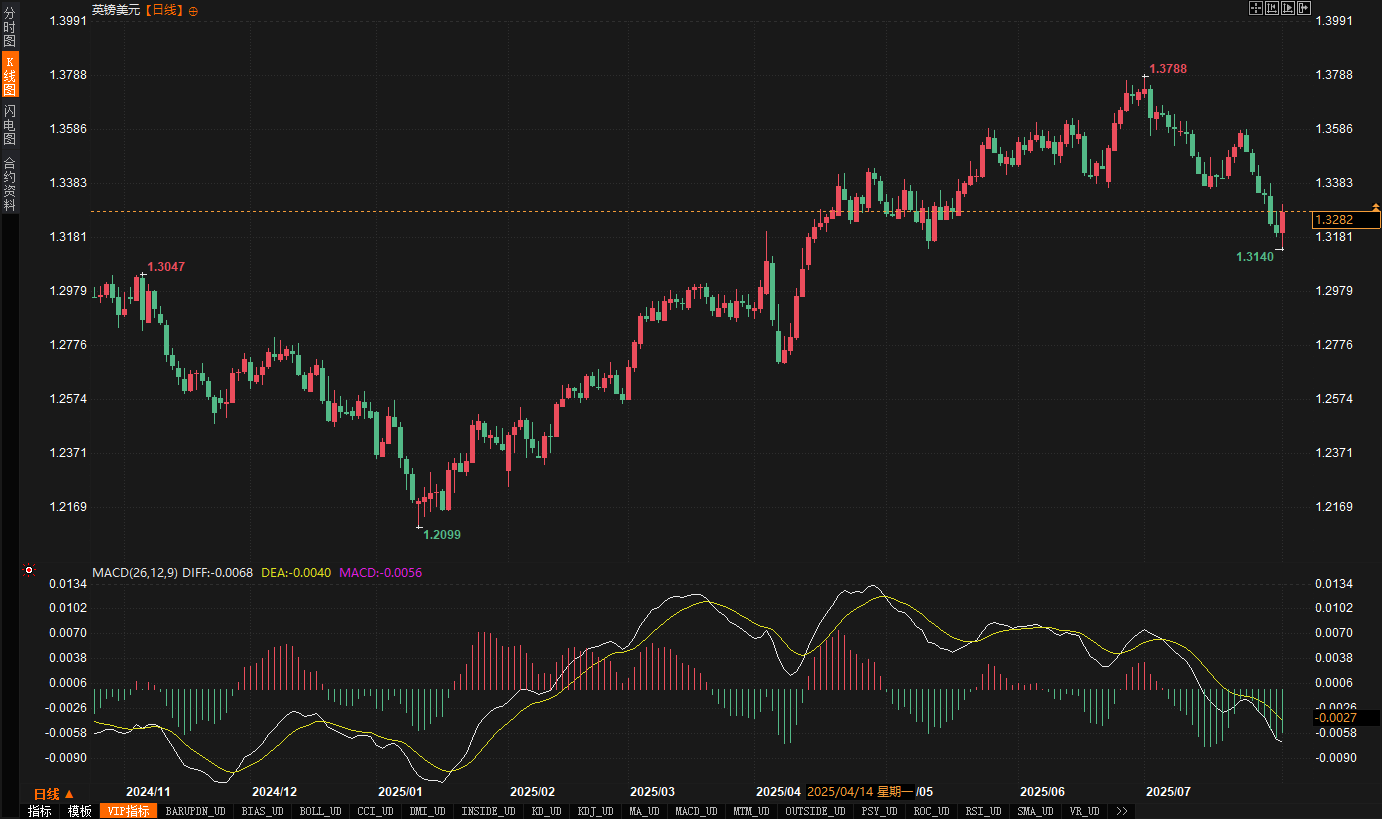
Economic Data and Events <br/>UK Economic Data: Data was sparse this week, with May employment data mixed, with a sharp increase in employment change but a small increase in the unemployment rate.
Fiscal concerns: Market concerns about the UK government's fiscal situation have intensified, with Chancellor of the Exchequer Reeves likely to announce new tax and spending cuts that could drag down economic growth.
Bank of England expectations: The market expects the Bank of England to cut interest rates by 25 basis points to 4.0% next week, and may cut interest rates again in November. The OIS market shows an 82% probability.
Analyst and Institutional Views : One institutional analyst believes that if the Bank of England cuts interest rates as expected and its forward guidance is dovish, it may further increase expectations of a rate cut and put pressure on the pound. If the guidance is hawkish, the pound may find support.
A market analyst pointed out that the deterioration of the UK's fiscal situation may drag down economic activity. If market concerns intensify, the pound may weaken further against the euro and the US dollar.
A trader said that the pound rose slightly against the yen this week, but the overall trend was weak, and the central bank's decision next week would be the key driving factor.
Next Week's Highlights <br/>The Bank of England's interest rate decision will be a key driver of the pound's performance. Markets generally expect a 25 basis point rate cut, with the tone of the forward guidance being a key focus. If the guidance suggests further easing, the pound could come under pressure; a hawkish tone could support it. July's Halifax House Price Index and final services PMI figures will also provide clues to economic activity. Uncertainty over fiscal policy is likely to continue weighing on the pound, and traders should monitor the market's reaction to the UK's fiscal situation.
Euro (EUR)
This week's trends : The euro (EUR=) fell to 1.1389 against the US dollar (USD) at the start of the week, its lowest level since June 10th, due to market concerns about a US-EU trade deal. Following the release of Friday's non-farm payroll data, the US dollar weakened, and the euro rebounded 1.16% to close at 1.1547. The US-EU trade deal continued to put pressure on the euro, but risk aversion and expectations of interest rate cuts provided some support.

Economic Data and Events <br/>US-EU Trade Agreement: The US imposes 15% tariffs on EU products, and 50% on steel, aluminum, and copper. The EU pledges to purchase $250 billion in US energy products and ease regulations on US agricultural products. The market sees the agreement as unfavorable to the EU, putting pressure on the euro.
Eurozone economic data: preliminary GDP growth slowed in the second quarter, business sentiment and economic confidence index improved in July, and HICP inflation remained stable at the ECB target.
ECB policy expectations: The market expects the European Central Bank to keep interest rates unchanged this year, but the US-China trade war may lead to an influx of Chinese products into the EU, increasing downward pressure on inflation, while US energy imports may push up inflation.
Analyst and Institutional Views <br/>An institutional analyst said that the unfavorable terms of the US-EU trade agreement will continue to drag down the euro, but the expectation that the European Central Bank will maintain interest rates unchanged may provide support for the euro.
A market analyst pointed out that if the US-China trade war leads to an influx of Chinese products into the EU, it may exacerbate downward pressure on inflation, and the euro's trend will be constrained by trade dynamics and ECB policy expectations.
A trader believes that the euro may rebound in the short term due to the weakening of the US dollar, but the long-term trend remains weak and attention should be paid to German industrial orders and eurozone retail sales data.
Next Week's Highlights <br/>The impact of the US-EU trade agreement will continue to dominate the euro's performance. If negative market sentiment regarding the agreement persists, the euro may come under pressure. The final July services PMI, Eurozone PPI, German industrial orders, and retail sales data will provide clues about economic activity. Weak data could weaken the euro further. ECB policy expectations and spillover effects from the US-China trade war will also impact the euro, so traders should monitor market sentiment.
Canadian Dollar (CAD)
This week's trends : The Canadian dollar (CAD=) weakened briefly against the U.S. dollar at the beginning of the week due to Trump's imposition of a 35% tariff on Canada (higher than the 25% he had previously threatened), hitting a low of 1.3879, its weakest level since May 22. Following the release of Friday's non-farm payroll data, the U.S. dollar fell, while the Canadian dollar rebounded 0.44% to close at 1.38. Rising oil prices provided some support for the Canadian dollar.
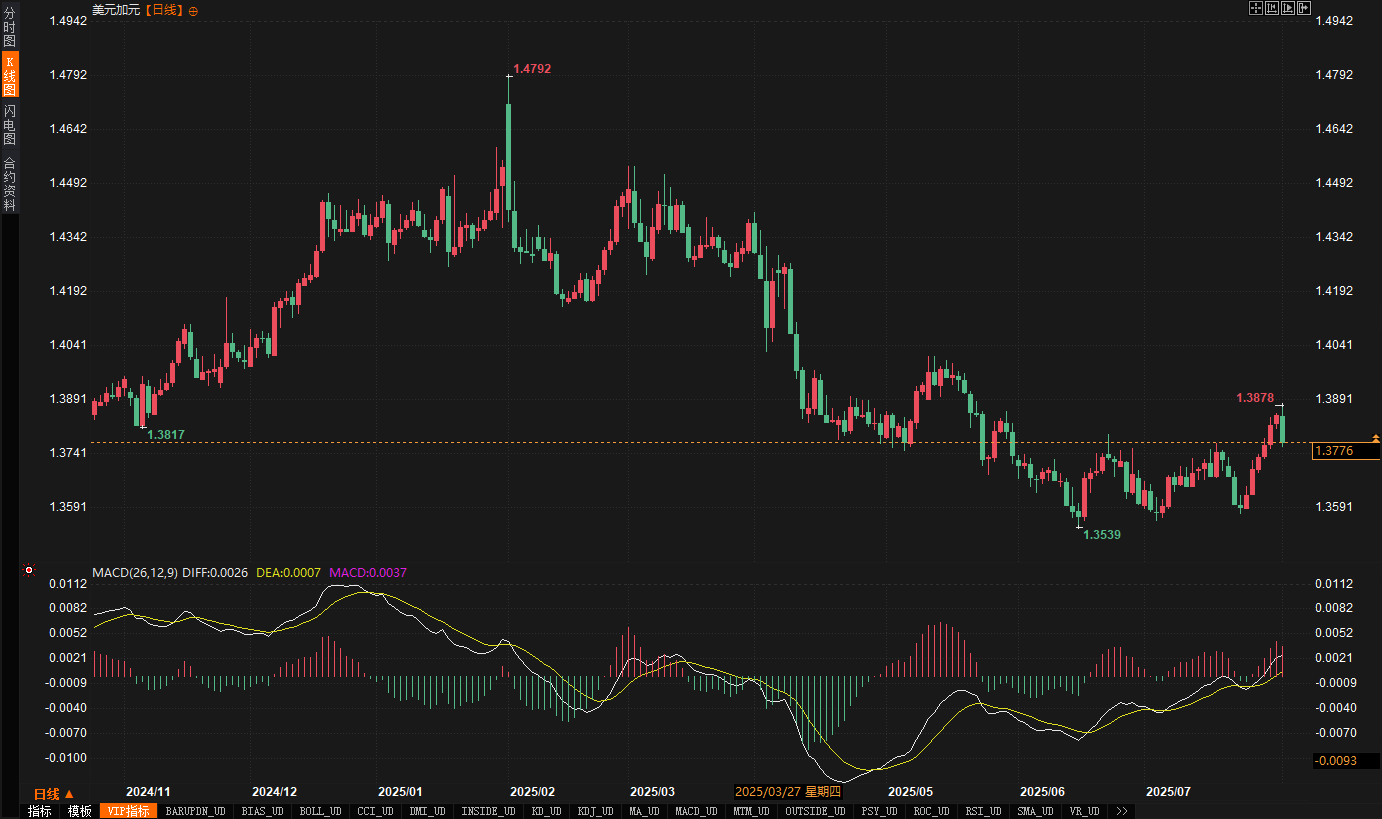
Economic data and events <br/>Bank of Canada interest rate decision: maintained overnight interest rate at 2.75%. The statement focused on the potential impact of US tariffs on the economy and did not disclose future policy intentions. The market expects it to remain unchanged this year.
May GDP: Negative growth for the second consecutive month, indicating economic weakness.
US-Canada trade negotiations: Trump imposed a 35% tariff on Canada, and Canada's position of recognizing the State of Palestine has increased the complexity of the negotiations, making it difficult to reach an agreement in the short term.
Analyst and Institutional Views <br/>An institutional analyst said that the uncertainty of the US-Canada trade negotiations will continue to drag down the Canadian dollar. If the negotiations are extended for 90 days, it may provide breathing space for the Canadian dollar.
A market analyst pointed out that rising oil prices provide support for the Canadian dollar. If oil prices continue to rise next week, the Canadian dollar may rebound further.
One trader believes that July's employment data will be a key driver of the Canadian dollar. If the job market tightens, the Bank of Canada may continue to remain on hold, supporting the Canadian dollar.
Next Week's Highlights : US-Canada trade negotiations remain a key driver of the Canadian dollar. Progress or an extension in the negotiations could support the Canadian dollar, while escalating tensions could put pressure on the currency. July employment data and the Ivey PMI will provide clues to economic activity. If the labor market tightens, the Canadian dollar could benefit from expectations that the central bank will maintain interest rates. Oil price trends will also influence the Canadian dollar, so traders should monitor global energy market developments.
Market outlook for next week
Next week, the foreign exchange market will enter a period of intense data and event-driven activity. The US dollar will be influenced by the July ISM non-manufacturing PMI and June factory orders data. If these figures are weak, expectations of rate cuts could further weaken the dollar. Further developments in Trump's tariff policy will continue to fuel risk aversion, impacting currencies such as the US dollar, Japanese yen, and Canadian dollar. The Japanese yen will need to monitor the Bank of Japan's July meeting summary and shifts in risk aversion. The British pound will be driven by the Bank of England's interest rate decision and forward guidance. The euro will need to be wary of continued pressure from the US-EU trade agreement. The Canadian dollar will focus on US-Canada trade negotiations and oil price trends. Traders of all currency pairs should closely monitor global trade dynamics, central bank policy expectations, and macroeconomic data, flexibly adjusting their strategies to respond to market fluctuations.
- Risk Warning and Disclaimer
- The market involves risk, and trading may not be suitable for all investors. This article is for reference only and does not constitute personal investment advice, nor does it take into account certain users’ specific investment objectives, financial situation, or other needs. Any investment decisions made based on this information are at your own risk.




















